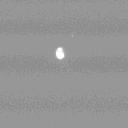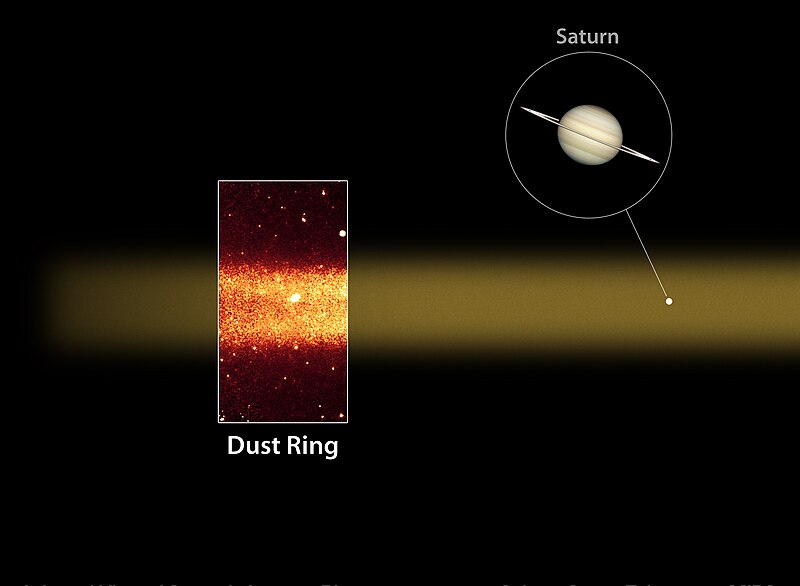etc. etc.
…
okay, i think that's the last of them!
*actually, a lot.
I'll try to keep track more!
 |
| The D ring, showing the evenly-spaced ringlets. Credit: NASA/JPL/Space Science Institute |
| The D ring in 1980 (bottom) and 2005 (top) showing the inward travel of the D72 ringlet (2nd from left) Credit: NASA/JPL/Space Science Institute |
| The outer B ring, showing the small moonlets embedded in it. Credit: NASA/JPL/Space Science Institute |
| S/2009 S1's discovery image. Note the long shadow despite the fairly small moon to cast it. Credit: NASA/JPL |
 | ||||
| The Encke Gap is visible, showing a small ringlet with 'knots' caused by previous gravitational interactions with Pan. Credit: NASA/JPL/Space Science Institute |
| The Moonlet Bleriot is visible at center bottom in this image, causing small waves in the ring around it, and a partial ring around its orbit. Credit: NASA |
 | ||||
| The Roche Division and Atlas are visible here, along with the F ring and the Encke and Keeler gaps. Credit: NASA |
 | |
| Saturn's outer ring system, showing the Janus & Epimetheus ring about midway between the F ring (bright, outer ring) and the G ring (shown) Credit: NASA/JPL/Space Science Institute |
.jpg/800px-Aegaeon_(2008_S1).jpg) | |
| The central G ring, with Aegaeon (bright dot) orbiting within the brightest segment. The image was taken over 10 minutes. Credit: NASA/JPL/Space Science Institute |
 | |||
| Image of Methone, showing blatant, obvious lack of impact craters. Credit: NASA/JPL-Caltech/Space Science Institute |
| The Anthe Ring arc is visible, with Anthe being the bright 'star' near the end of it. |
 | |
| The discovery of Anthe (red square). Note how Mimas appears significantly brighter than the rest of the moons. Credit: NASA/JPL/Space Science Institute |
 |
| The moon Pallene. Credit: NASA/JPL/Space Science Institute |
| The E ring, showing Enceladus's silhouette and its effects on the ring. The bright dot directly below it is a geyser erupting near its south pole. Credit: NASA/JPL/Space Science Institute |
 | |
| The Phoebe Ring in infrared, comparing the size of Saturn to its extent. Credit: NASA/ESA/STScl/AURA |
 | |
| Image of Phoebe, showing heavily-cratered surface. Credit: NASA/JPL/Space Science Institute |
| The Halo ring in infrared- the bright yellow line is the Main Ring. Credit: NASA/JPL-Caltech |
| The Gossamer rings, with the Amalthea ring's edge being visible as a slight decrease in brightness 2/3 to the left of the image. Credit: NASA/JPL-Caltech |
| An image of the rings of Jupiter, showing the gradual decrease in brightness further away from Jupiter. |
| Tempel 1 while it's not out-gassing. Credit: NASA/JPL/University of Maryland |
| A diagram of the Kreutz Sungrazers' fracturing. Credit: Sekanina, Zdeněk; and Chodas, Paul W. |
 | ||
| the Hertzsprung-Russell diagram Credit: atlasoftheuniverse.com |
Coming up later today:Comets, Centaurs, and Damocloids- oh my! The different ice-covered bodies of the Solar System.
 | ||
| A visualization of the 'lines' on Phobos. Credit: NASA |
 | |
| Enki Catena, a crater chain on Ganymede. Credit: JPL/NASA |
| The last image taken. Credit: Soyuz program |
| The 2nd last image taken. Credit: Soyuz program |